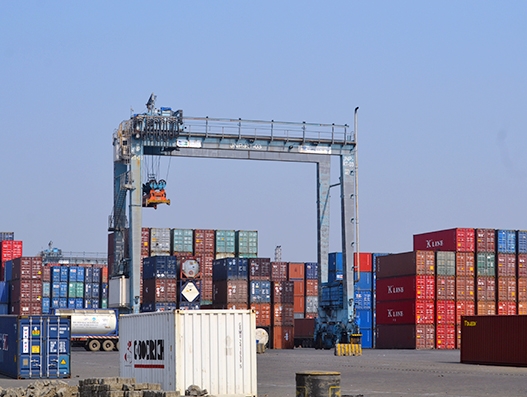
Major ports in India clocked 4.77 percent growth during 2017-18
April 9, 2018: According to Indian Ports Association (IPA), major ports in India witnessed 4.77 percent growth, and cumulatively handled 679.35 million tonnes of cargo between April 2017 and March 2018, as against 648.39 million tonnes during the 2016-17. Nine ports, including Haldia, Visakhapatnam, Paradip, Kamarajar, Chennai, Cochin, New Mangalore, JNPT and Deendayal also registered […]

April 9, 2018: According to Indian Ports Association (IPA), major ports in India witnessed 4.77 percent growth, and cumulatively handled 679.35 million tonnes of cargo between April 2017 and March 2018, as against 648.39 million tonnes during the 2016-17.
Nine ports, including Haldia, Visakhapatnam, Paradip, Kamarajar, Chennai, Cochin, New Mangalore, JNPT and Deendayal also registered positive growth in cargo traffic.
Cochin Port registered the highest growth of 16.52 percent, followed by Paradip (14.68 percent), Kolkata including Haldia (13.61 percent), JNPT (6.2 percent), and New Mangalore (5.28 percent).
The growth at the Cochin Port was mainly due to increase in traffic of finished fertilizer (105.88 per cent), port of loading (POL) (20.62 per cent) and containers (12.46 per cent).
In Kolkata Port, the overall growth was 13.61 percent. Kolkata Dock System (KDS) registered a traffic growth of 3.45 percent. Whereas Haldia Dock Complex (HDC) registered positive growth of 18.61 percent, which was highest among all the major ports.
Deendayal (Kandla) Port handled the highest volume of cargo traffic, to 110.10 million tonnes (16.21 percent share), followed by Paradip with 102.01 million tonnes (15.02 percent share), JNPT with 66.00 million tonnes (9.72 percent share), Visakhapatnam with 63.54 million tonnes (9.35 percent share), and Mumbai with 62.83 million tonnes (9.25 percent share). The five ports handled around 60 percent of the major port traffic.
Commodity-wise percentage share of POL was maximum at 31.55 percent, followed by container (19.67 percent), thermal & steam coal (14.02 percent), other miscellaneous cargo (13.62 percent), coking & other coal (7.45 percent), iron ore & pellets (7.15 percent), other liquid (4.33 percent), finished fertilizer (1.11 percent) and FRM (1.11 percent).

